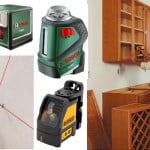Last updated on February 15th, 2022
Our site is reader supported, this means we may earn a small commission from Amazon and other affiliates when you buy through links on our site.
Raking leaves is an unavoidable chore for every gardener. While some people find raking a therapeutic way to spend an afternoon, others dread this time-consuming annual ritual.
Fallen leaves don’t need to be a nuisance though. Here are ten practical tips for dealing with leaves and using them in your garden.
1. Shred leaves faster with a lawnmower
Raking leaves by hand is a monotonous process, but you can speed things up by using a lawnmower to create mulch.
Start by making sure you’re using a bag with an effective filter because fallen leaves contain lots of bacteria and allergens. Then simply mow over the leaves to create a shredded bag of mulch.
This tip is much more effective in dry weather because the leaves will fall apart rather than clump together. Don’t attempt it if the leaves are wet, as they’ll probably clog up your mower.
2. Use the correct rake
If your rake is too small or flimsy for the job, clearing leaves will take longer than it should.
The best rakes are at least 30 inches wide and this lets you move plenty of leaves with a single swipe. If possible, use a “no clog” rake because these have blunted tips to prevent leaves from getting caught.
On a side note, it’s more efficient to rake leaves onto a tarp rather than using a wheelbarrow or bag. Once the tarp is full, tie up the four corners and drag it to wherever you are depositing the leaves.
3. Think carefully about where your beds are located
Placing beds filled with shrubbery near big trees is a great way to reduce the number of visible leaves. As long as you choose plants that enjoy the natural mulch created by fallen leaves, these beds can thrive without any autumn raking.
You can even use these beds as a final location for your raked leaves. While you still need to rake them off the lawn, it’s much easier to leave them in a bed than to bag them. Just make sure they are spread evenly and aren’t covering any of your plants.
4. Always rake wet leaves
Unlike mulching with a lawnmower, it’s easier to rake wet leaves. Dry leaves are lighter, but are less likely to stay in a pile – especially on a windy day!
The exception is if you suffer from airborne allergies. Bacteria thrive in wet conditions, so it’s best to wait for the leaves to dry before you rake them.
5. Turn the leaves into mulch over winter
Fallen leaves can be used to make nutrient-rich mulch for combing into plant beds.
The key is to not let the leaves fully decompose into compost. Instead, shred the leaves with a lawnmower and put them into a compost bin through the winter. For best results, add a layer of grass clippings for every 30-40cm of shredded leaves because the extra nitrogen helps the leaves to decompose. You should also add a small amount of water to mix it all together.
Once you have a bin filled with wet (but not saturated) leaves and nitrogen, cover with plastic and the mulch should be ready by spring.
6. Don’t forget about the gutters
Fallen leaves can block gutters, leading to overflowing during winter rain. Icy temperatures can also cause blockages and even leakages in clogged gutters.
For this reason, it’s important to remove leaves from your gutters at least once a year. When most of the leaves have fallen, use a scoop to pull out branches, leaves and anything else that might cause a blockage. Make sure you wear gloves because rotting leaves are a breeding ground for bacteria.
7. Speed up the process with a garden vacuum
Garden vacuums are much faster to use for clearing leaves and other debris from your garden. They can be pricey, especially for the most powerful petrol-powered models, but they are worth it if you have a large garden.
Most garden vacuums have both ‘blow’ and ‘suck’ modes. You can use the first to blow leaves into a pile, before sucking them into a bag. Many of the best garden vacuums, like the machines on this list, also have a built-in mulching function.
Alternatively, leaf blowers are cheaper and useful for moving large amounts of leaves into a pile. You’ll need to pick up the leaves yourself though.
Note: Cordless garden vacuums are more convenient for small gardens, but their limited battery life makes them less useful for clearing large areas.
8. Avoid raking altogether by digging leaves into the soil
If you don’t fancy raking or vacuuming the leaves in your garden, you can use a tiller to dig them into the soil.
This hides the leaves and breaks them into smaller pieces so they can decompose and provide your soil with lots of healthy nutrients. Tilling can be time-consuming though.
9. Use a tarp to dry wet leaves
I have previously mentioned that it’s often easier to rake wet leaves, but the downside to this is that these are heavy and unpleasant to carry.
If you want the leaves to dry faster, cover them with a tarp on a sunny day. The warmer temperature and airflow underneath the tarp helps moisture to evaporate.
10. Decide whether you need to rake the leaves at all
In some circumstances, letting a natural layer of leaves remain over the winter can be a good idea. Leaf litter is great for wildlife, and not raking them can save you a lot of time.
You shouldn’t let leaves smother your lawn though because this can kill the grass and turn it into mush. If you can’t see the tips of grass blades through the leaves, or leaves are covering a large part of your garden, then it’s almost always best to rake them.
Main Photo by Jennifer Murray from Pexels
Summary
The yearly battle with fallen leaves can be frustrating, but there are ways to make clearing leaves less time-consuming. Leaves can also be used to provide vital nutrients to your lawn and beds, especially if allowed to turn into nutrient-rich mulch over winter.
Do you have any questions about dealing with autumn leaves? Or do you have a tip to add? Please let me know in the comments form below.


